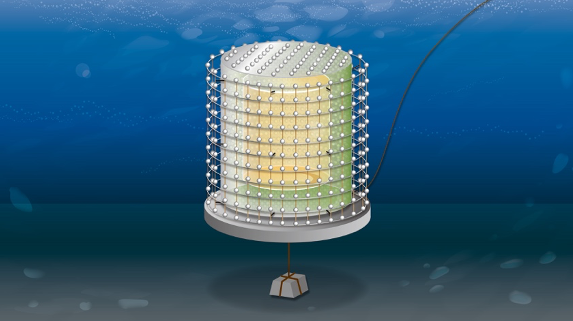OBD (Ocean Bottom Detector)

Geoneutrinos are elementary particles produced by the β-decays of radioactive isotopes within the Earth. Detecting these particles not only enables us to study the Earth’s heat but also helps determine the abundance of radioactive isotopes and even other elements. However, due to their extremely small mass and interactions limited to the weak and gravitational forces, geoneutrinos are incredibly challenging to detect.
Nevertheless, in 2005, the KamLAND experiment (Japan) became the first ever to successfully observe geoneutrinos, providing groundbreaking insights into the Earth’s interior. In 2022, the KamLAND collaboration published their latest geoneutrino detection result, reporting that the radiogenic heat produced by uranium and thorium is 15.4 (+8.3 / -7.9) TW (KamLAND collaboration, 2022). This achievement spurred the development of new methods for studying the Earth’s structure, bridging neutrino physics with geochemistry and geophysics. The Borexino experiment (Italy) later confirmed geoneutrino detection, and ongoing projects such as SNO+ (Canada) and the upcoming JUNO experiment (China) aim to further our understanding of the Earth’s interior through continued geoneutrino observations. However, the detectors mentioned above are all located on thick continental crusts, and the high concentration of radioactive isotopes in these crusts limits our ability to investigate deeper layers of the Earth.
Ocean Bottom Detector
To address aforementioned challenge, a project called Ocean Bottom Detector (OBD) has been proposed in 2019 (Sakai, et al., 2021). Currently, the program is led by Tohoku University, with active collaboration from prominent institutions including Japan Marine Science and Technology Center (JAMSTEC), the University of Hawaii, Lawrence Livermore National Laboratory (LLNL), Chiba University, and University of Maryland. This initiative involves placing a neutrino detector on the ocean floor off the coast of Hawaii, where the oceanic crust is thin and contains fewer radioactive isotopes. This makes the location ideal for directly detecting geoneutrinos from the mantle. To pave the way for full-scale deployment, a 20-kg prototype is currently scheduled to be deployed in the near future (Watanabe, et al., 2023).
Another key challenge is that traditional detection methods lack the angular resolution needed to determine the direction of incoming neutrinos, making it difficult to confirm whether a detected neutrino truly originates from the Earth’s interior. In recent years, new techniques have been developed that enable neutrino detectors to achieve angular resolution. We will explore the potential observational results that could be obtained if OBD is equipped with angular resolution. Such observations could not only provide direct evidence of geoneutrinos’ directionality but also offer valuable insights into the structure and dynamics of the Earth’s deep interior, including features like large low-shear-velocity provinces (LLSVPs) and superplumes.
For more information about OBD, please visit the website (in Japanese) of Research Center for Neutrino Science, Tohoku University.
References
- Abe, S., et al. (KamLAND Collaboration). (2022). Abundances of uranium and thorium elements in Earth estimated by geoneutrino spectroscopy. Geophysical Research Letters, 49(16), e2022GL099566.
- Sakai, T., Inoue, K., Watanabe, H., McDonough, W. F., Abe, N., et al. (2021). Study of Ocean Bottom Detector for observation of geo-neutrino from the mantle. In 17th International Conference on Topics in Astroparticle and Underground Physics (TAUP 2021). Journal of Physics: Conference Series, 2156(1), 012144.
- Watanabe, H., Abe, N., Araki, E., Araki, T., Inoue, K., et al. (2023). Ocean Bottom Detector: frontier of technology for understanding the mantle by geoneutrinos. In 2023 IEEE Underwater Technology (UT23).